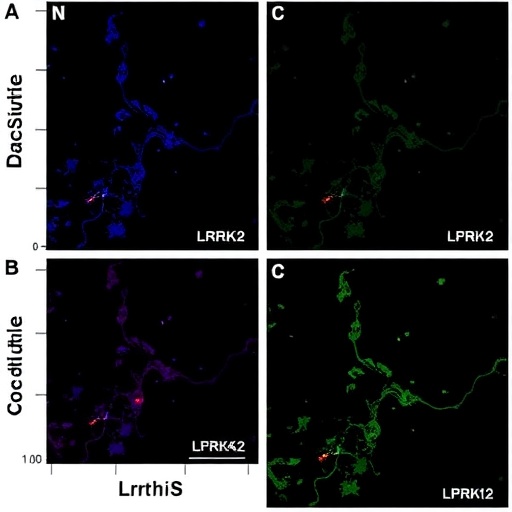
In a groundbreaking study published in BMC Pediatrics, a team of researchers led by Yang et al. has developed a sophisticated perinatal risk prediction model aimed at assessing the likelihood of recurrent respiratory tract infections in moderate-to-late preterm infants. This significant advance in pediatric healthcare brings to light the pressing need to address vulnerabilities in this fragile population, particularly as respiratory infections pose a considerable risk to their overall health and development.
The study, which is a retrospective cohort analysis, meticulously evaluates data collected from a diverse group of moderate-to-late preterm infants. These infants, born between 32 and 36 weeks of gestation, are at an increased risk for numerous health complications, with respiratory issues being among the most critical. By focusing on this specific demographic, the researchers align their findings with the pressing clinical need for effective prediction and management strategies tailored to preterm infants.
The methodology employed in the study is a crucial aspect of its validity. Utilizing comprehensive electronic health records, the authors extracted pertinent clinical data spanning several years, allowing for a robust analysis of recurrent respiratory infections. Such infections can have lasting implications, potentially impacting lung development and overall health trajectories in preterm infants. Researchers conducted thorough statistical analyses, employing advanced modeling techniques to ensure the precision and reliability of their predictions.
At the core of the risk prediction model is a series of clinical variables that were identified as significant predictors of respiratory tract infections. Factors such as gestational age at birth, birth weight, and maternal health conditions were paramount in the algorithm’s development. These variables help identify infants at highest risk, enabling healthcare providers to implement early interventions and targeted monitoring strategies, which can significantly reduce the incidence and severity of infections.
Additionally, the role of environmental factors, such as exposure to secondhand smoke and socioeconomic status, cannot be overstated. The model takes into account these extrinsic factors that may enhance a preterm infant’s vulnerability to respiratory infections. This holistic approach not only reflects the complexity of health outcomes for preterm infants but also underscores the importance of considering both biological and social determinants of health.
The validation process of the model further solidifies its utility in clinical settings. By applying the model to an independent cohort of infants, Yang and colleagues demonstrated its effectiveness in accurately predicting recurrent respiratory tract infections. The high predictive accuracy achieved through this validation underscores the model’s relevance and potential use in clinical practice, allowing for proactive management of at-risk infants.
Moreover, the implications of this research extend beyond immediate clinical applications. By establishing a reliable means to predict respiratory complications in preterm infants, healthcare providers can also engage in targeted educational initiatives for parents and caregivers. Empowering families with information about risk factors can facilitate better home care practices and support informed decision-making regarding follow-up care.
A noteworthy aspect of the study is its potential to influence broader public health policies. Given the high hospitalization rates associated with respiratory infections in preterm infants, effective risk stratification tools can guide resource allocation in hospitals, ensuring that healthcare systems are equipped to handle cases that require the most intensive care. This could lead to better health outcomes while simultaneously reducing healthcare costs—an essential consideration in today’s economic climate.
Furthermore, as medical research continues to evolve, the findings from this study may pave the way for subsequent investigations aimed at refining and enhancing perinatal care practices. Ongoing research could explore the development of targeted interventions based on the identified risk factors, potentially leading to innovative therapeutic approaches that mitigate the impacts of respiratory infections on vulnerable infants.
The innovation exhibited in this study aligns with a growing trend in pediatric research where predictive analytics are leveraged to enhance patient outcomes. Other medical fields have successfully utilized similar models to predict health risks, and the application within pediatrics marks an exciting step forward in integrating data-driven methodologies into child healthcare.
As the world becomes increasingly aware of the importance of data in informing clinical practice, studies like the one conducted by Yang et al. highlight a clear pathway for developing actionable strategies that can safeguard the health of preterm infants. The integration of risk prediction models into routine clinical assessments may soon be commonplace, revolutionizing the way healthcare professionals approach risk management for this vulnerable population.
In conclusion, the development and validation of the perinatal risk prediction model for recurrent respiratory tract infections in moderate-to-late preterm infants represent a significant stride in mitigating the risks associated with preterm birth. As healthcare systems continue to adapt and improve, it is imperative that innovations such as these are embraced and integrated into everyday clinical practice. The future of pediatric healthcare promises to be increasingly influenced by such advancements, ultimately aiming to enhance the quality of care and health outcomes for some of the most vulnerable patients in our society.
Subject of Research: Perinatal risk prediction for recurrent respiratory tract infections in moderate-to-late preterm infants.
Article Title: Development and validation of a perinatal risk prediction model for recurrent respiratory tract infections in moderate-to-late preterm infants: a retrospective cohort study.
Article References: Yang, H., Wang, Y., Fu, L. et al. Development and validation of a perinatal risk prediction model for recurrent respiratory tract infections in moderate-to-late preterm infants: a retrospective cohort study. BMC Pediatr 25, 665 (2025). https://doi.org/10.1186/s12887-025-05937-6
Image Credits: AI Generated
DOI:
Keywords: Perinatal risk, respiratory infections, preterm infants, predictive model, pediatric healthcare.
Tags: clinical strategies for managing respiratory infectionselectronic health records in medical researchhealth complications in preterm infantslung development in early lifemoderate-to-late preterm infantspediatric healthcare advancementsperinatal risk prediction modelpredicting respiratory infections in preterm infantsrecurrent respiratory tract infectionsrespiratory health in preterm babiesretrospective cohort analysis in pediatricssignificance of respiratory health monitoring




